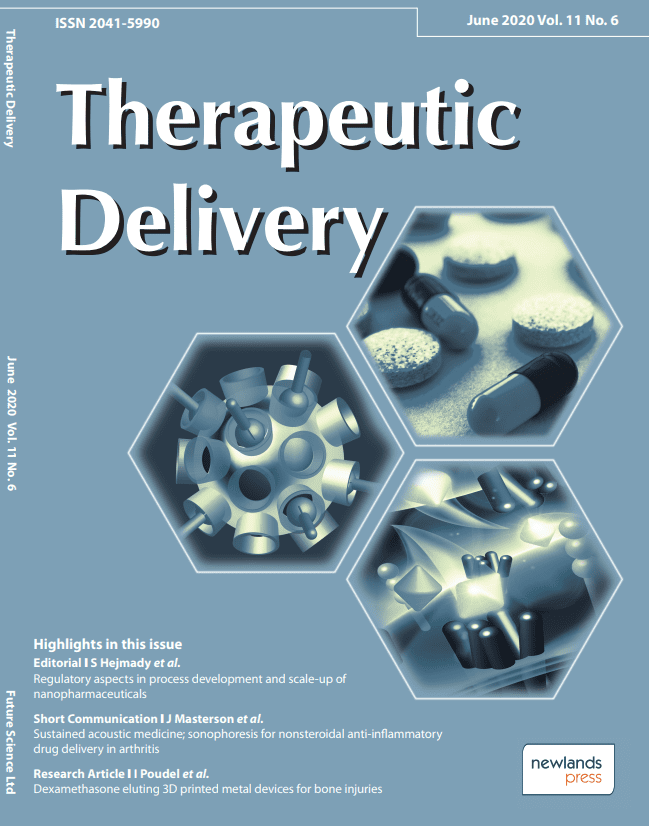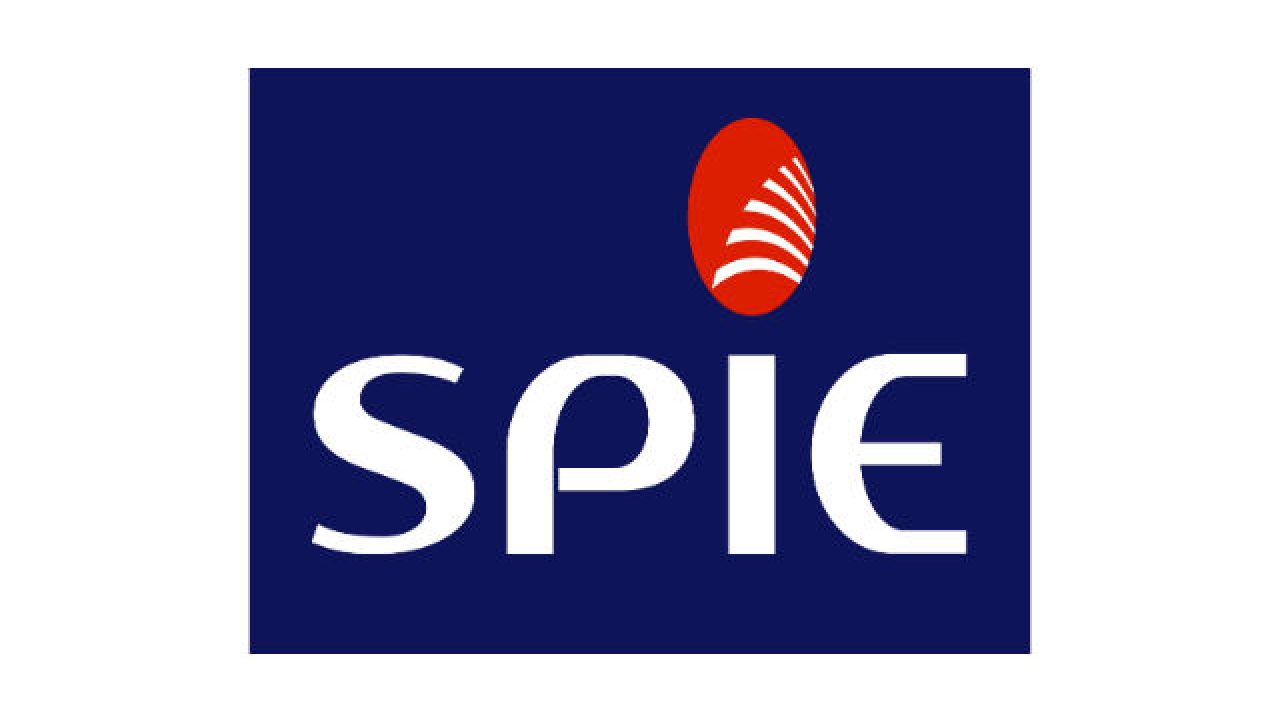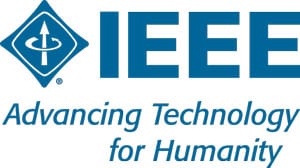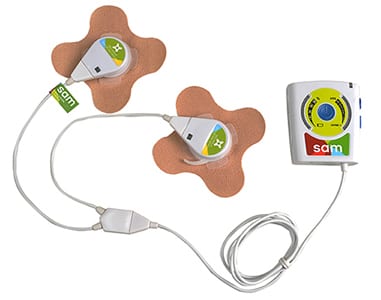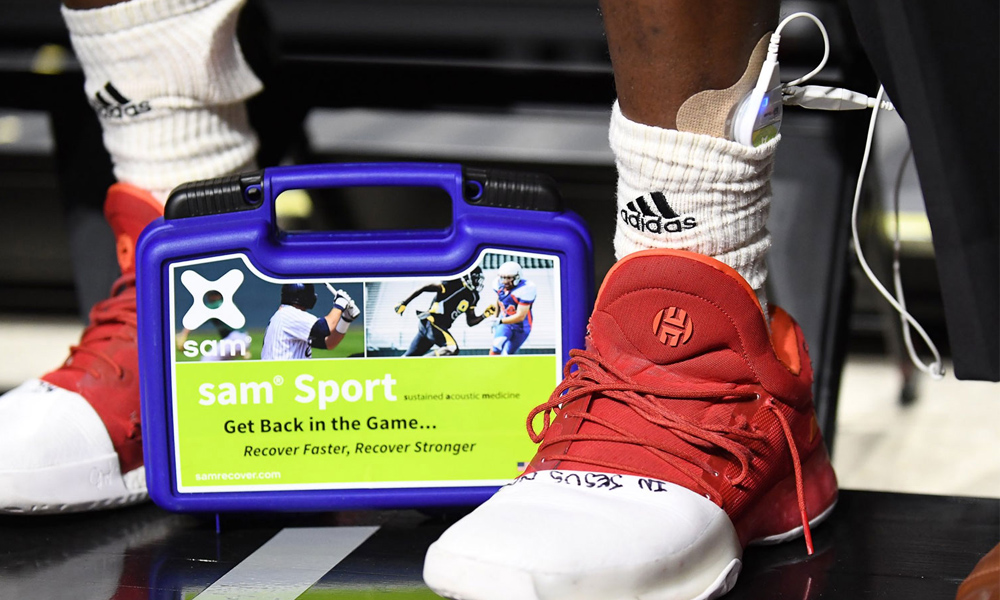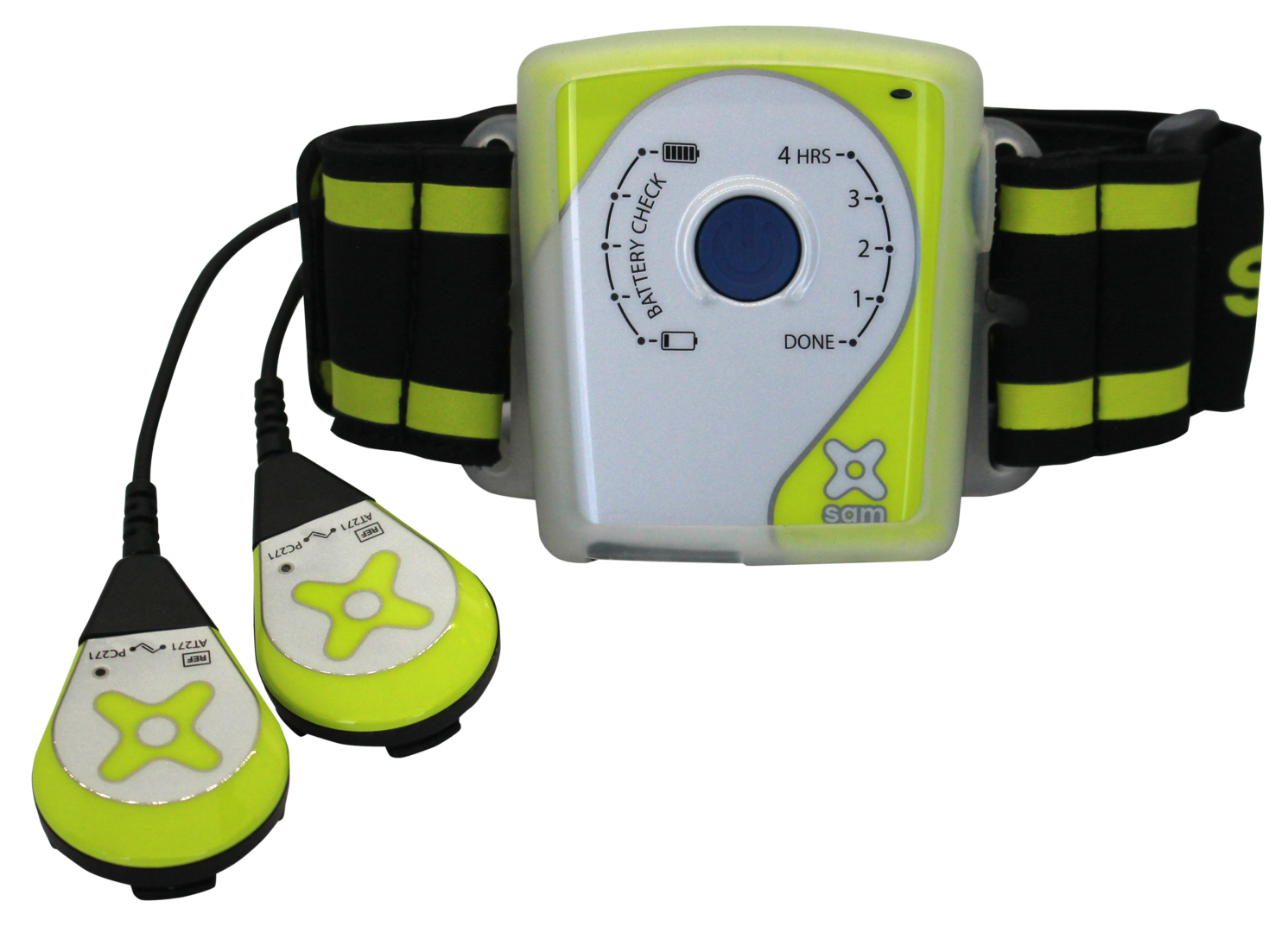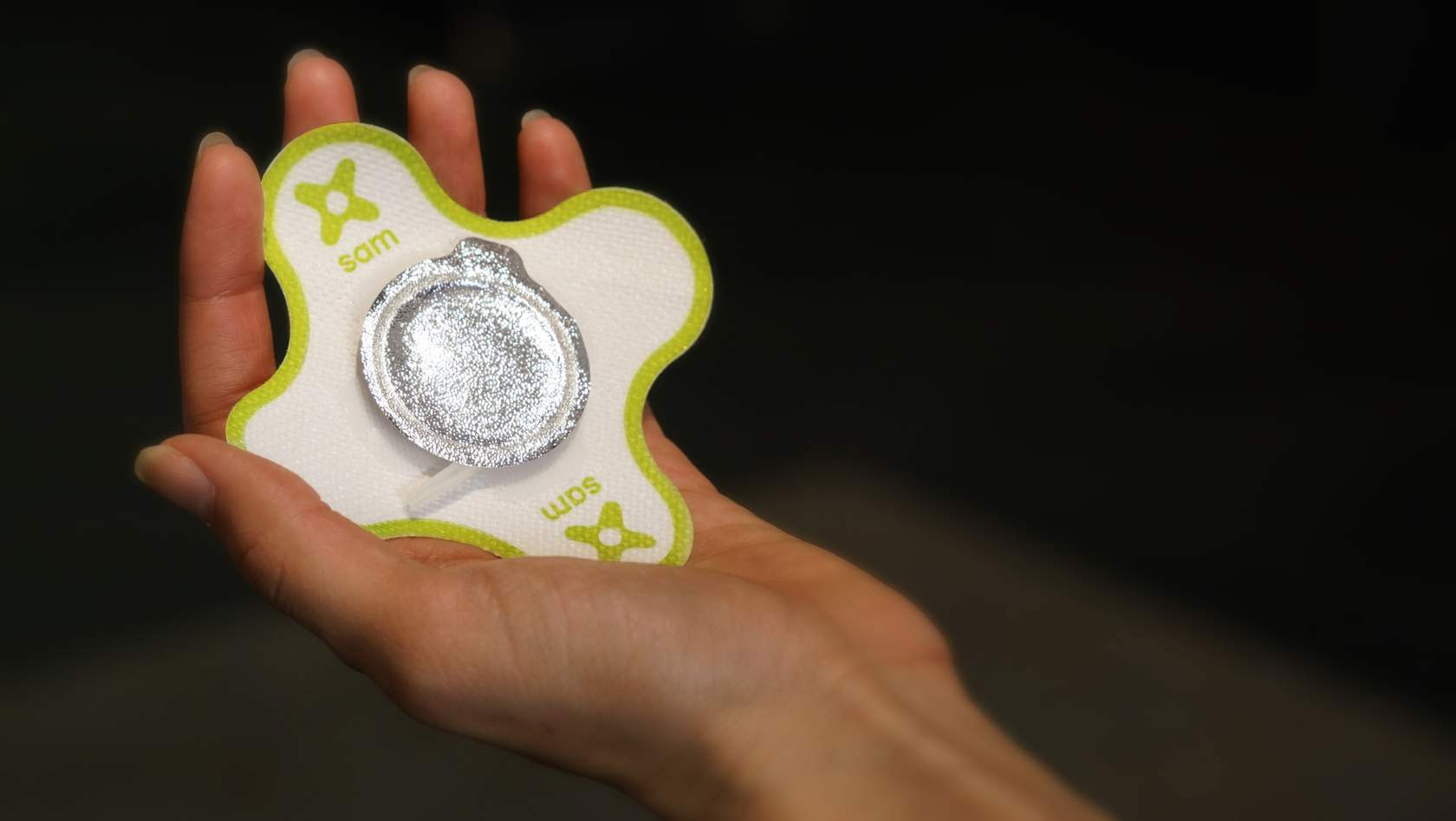Research Behind Sustained Acoustic Medicine Journals and Conferences
sam® CLINICAL RESEARCH
1. Jarit et al. 2023 “Long Duration Sonophoresis of Diclofenac to Augment Rehabilitation of Common Musculoskeletal Injuries.” Glob J Ortho Res. 4(2): 2023.
2. Krystofiak et al 2023 “Long Duration Ultrasound Combined with Platelet-Rich Plasma Injection for Return to Sport after Soft Tissue Injury”. Orthop Muscular Syst.1.
3. Winkler et al. 2021 “Sustained acoustic medicine for the treatment of musculoskeletal injuries: a systematic review and meta-analysis.” BMC Sports Science, Medicine and Rehabilitation (2021)
4. Uddin et al. 2021 “Low-Intensity Continuous Ultrasound Therapies—A Systemic Review of Current State-of-the-Art and Future Perspectives.” Journal of Clinical Medicine (2021).
5. Best et al. 2020 “Sustained acoustic medicine as a nonsurgical and non-opioid knee osteoarthritis treatment option: a health economic cost effectiveness analysis for symptom management.” Journal of Orthopaedic Surgery and Research (2020)
6. Best et al. 2016 “Low Intensity Ultrasound for Promoting Soft Tissue Healing: A Systematic Review of the Literature and Medical Technology.” Intern Med Rev (Wash D C)
7. Patterson et al. 2020 “Low-Intensity Continuous Ultrasound for the Symptomatic Treatment of Upper Shoulder and Neck Pain: A Randomized, Double-Blind Placebo-Controlled Clinical Trial.” J. Pain Reas. 2020
8. Draper et al. 2018 “Effect of low-intensity long-duration ultrasound on the symptomatic relief of knee osteoarthritis: a randomized, placebo-controlled double-blind study.” J. Orth. Surg. Reas. 2018
9. Langer et al. 2015 “Sustained acoustic medicine provides pain relief for osteoarthritis of the knee.” Physiotherapy, 101, e864.
-
Sustained Acoustic Medicine; Sonophoresis for Nonsteroidal Anti-Inflammatory Drug Delivery in Arthritis
Therapeutic Delivery, July 2020 Volume 11 Number 6
Sustained acoustic medicine can be used as a transdermal drug-delivery device for nonsteroidal anti-inflammatory drugs.
-
Low-Intensity Continuous Ultrasound for the Symptomatic Treatment of Upper Shoulder and Neck Pain: A Randomized, Double-Blind Placebo-Controlled Clinical Trial.
Journal of Pain Research, June 2020 Volume 13 Number 1277
Low-intensity continuous ultrasound treatment significantly reduced pain in patients with upper trapezius myofascial pain of the neck and shoulder. LICUS treatment showed a clinically meaningful improvement in the GROC scores for patients. The results from this clinical trial indicate that the LICUS treatment of 18,720 Joules can effectively be used to treat clinical pain related to upper trapezius myofascial pain.
-
The Benefits of Long Duration Ultrasound
Journal of Scientific & Technical Research, June 2019 Volume 18 Number 4
Emerging clinical evidence demonstrates that ultrasound dose timing (i.e. daily treatment) and duration significantly impact benefits and treatment results. Therapeutic wearable ultrasound for multi-hour therapy has been shown to be an effective treatment for many musculoskeletal injuries by increasing circulation, oxygen and nutrient deliver, removal of cellular waste products, and collagen matrix repair.
-
Traditional Therapeutic Ultrasound Compared with Sustained Acoustic Medicine (SAM). a comparison
JMOJ Sports Medicine, February 2019 Volume 3 Number 1
The SAM is different from traditional ultrasound. It runs on a battery, whereas traditional ultrasound is plugged into a wall socket. The size of traditional ultrasound is the size of a 3 ring binder, whereas the SAM is about the size of a TENS unit or cell phone. Traditional ultrasound produces from 2000 to 4000 joules. The SAM can produce up to 18,000 joules when two crystals are used.
-
Effect of low-intensity long-duration ultrasound on the symptomatic relief of knee osteoarthritis: a randomized, placebo controlled double-blind study
Journal of Orthopedic Surgery and Research, September 2018 Volume 13 Number 257
Long-duration low-intensity ultrasound significantly reduced pain and improved joint function in patients with moderate to severe osteoarthritis knee pain. The clinical findings suggest that ultrasound may be used as a conservative non-pharmaceutical and non-invasive treatment option for patients with knee osteoarthritis. Additional research is warranted on non-weight bearing joints of the musculoskeletal system as well as extended treatment time frames and follow-up.
-
The Effect of Low Intensity Wearable Ultrasound on Blood Lactate and Muscle Performance after High Intensity Resistance Exercise
Journal of Exercise Physiology, August 2017 Volume 20 Number 4
The purpose of this study was to determine if a low intensity long duration ultrasound device enhances recovery from exercise by reducing blood lactate resulting in improved isokinetic muscle performance after lower extremity resistance exercise.
-
Low Intensity Ultrasound for Promoting Soft Tissue Healing: A Systematic Review of the Literature and Medical Technology
Internal Medicine Review, June 2016 Volume 2 Number 3
For skeletal muscle and ligament injuries, LITUS increased cell proliferation during myoregeneration and improved tissue biomechanics (ultimate load, stiffness, energy absorption). LITUS aided tendon bone junction healing through improved tissue function. Scientific evidence supports the use of LITUS to treat soft tissue injuries, and improve outcomes for musculoskeletal injuries and post-operative recovery. Lastly, we discuss the use of LITUS devices facilitating daily applied therapy in the home setting.
-
Intramuscular Heating Characteristics of Multihour Low-Intensity Therapeutic Ultrasound
Journal of Athletic Training, February 2015 Volume 50 Number 11
The LITUS device elicited tissue heating equivalent to traditional ultrasound but could be sustained for multiple hours. It is a safe and effective alternative tool for delivering therapeutic ultrasound and exploring dosimetry for desired physiologic responses.
-
Sustained Acoustic Medicine: A Novel Long Duration Approach to Biomodulation Utilizing Low Intensity Therapeutic Ultrasound
Journal of SPIE, May 2015 Volume 1 Number 9467
Therapeutic ultrasound is an established technique for biomodulation used by physical therapists. Typically it is used to deliver energy locally for the purpose of altering tissue plasticity and increasing local circulation. Access to ultrasound therapy has been limited by equipment and logistic requirements, which has reduced the overall efficacy of the therapy. Ultrasound miniaturization allows for development of portable, wearable, self-applied ultrasound devices that sidestep these limitations.
-
Pilot Clinical Studies of Long Duration, Low Intensity Therapeutic Ultrasound for Osteoarthritis
Journal of IEEE, April 2014
There was a pain reduction effect from using ultrasound, as high as fifty two percent in one study. As well, initial data demonstrates that mobility may be increased for patients experiencing mild to moderate arthritis of the knee.
-
"SonoBandage" a transdermal ultrasound drug delivery system for peripheral neuropathy
Journal of Acoustic Society of America, June 2013, Volume 19
The design of the SonoBandage allows the device to be used over a range of ultrasound frequencies (0.1-3MHz), intensities (0.1-3W/cm2) and durations (0.25-4hrs) increasing system flexibility for drug delivery protocols. The SonoBandage with NSAID was evaluated on a bench-top model with freshly harvested porcine skin and synthetic biomimetic human skin membrane (Millipore Inc). Across the n=40 samples studied, salicylic acid drug flux was increased by 2-20x as compared to control samples (p<0.01) after 1-4 hours of ultrasound treatment. SonoBandage has potential to be used as a practical NSAID delivery platform for peripheral neuropathy.
Technology History
A significant and growing body of +40 basic science, animal and human subject clinical research studies support the sam® family of ultrasound products FDA approvals, indications and clinical outcomes achieved for patients. Over 20 level I-V clinical research studies, randomized-placebo-controlled trials and publications on back pain, arthritis pain, strain injuries of tendons and ligaments, recovery, range of motion, strength and the healing of soft tissue have been published on ZetrOZ Technology. Additional clinical health economic studies have demonstrated that sam® treatment saves over $27,000.00 in medical and indemnity expenses when introduced early into the treatment program of an injured patient. sam® is clinically proven to treat the underlying cause of pain, reduce healthcare costs and the risks associated surgery and medication. Additionally, sam® has proven to return patients to work with elbow and shoulder injuries to maximum medical improvement (MMI) in 8-weeks, and 10-weeks for lower-back injuries.
Over a decade ago the precursor of sam® medical technology was evolving out of a biomedical research laboratory in the founders lab. Since FDA approval in 2014, sam® has already helped over 200,000 patients in the United States. This has been made possible by the support of US Governmental agencies including the National Institutes of Health, the Department of Defense, the National Science Foundation, the National Space Biomedical Research Institute, the National Arthritis Foundation and University and Industry partners who have funded millions of dollars of research into the sam® family of ultrasound products. sam® is currently being used by thousands of athletes, soldiers and chronic pain suffers, and is covered by health insurance for the military and veterans, professional, Olympic and college athletes, and people injured in accidents on and off the job. There is growing awareness and our company BHAG is to help 100 million people with sam® technology and research.
Clinical Research Summary 2019


